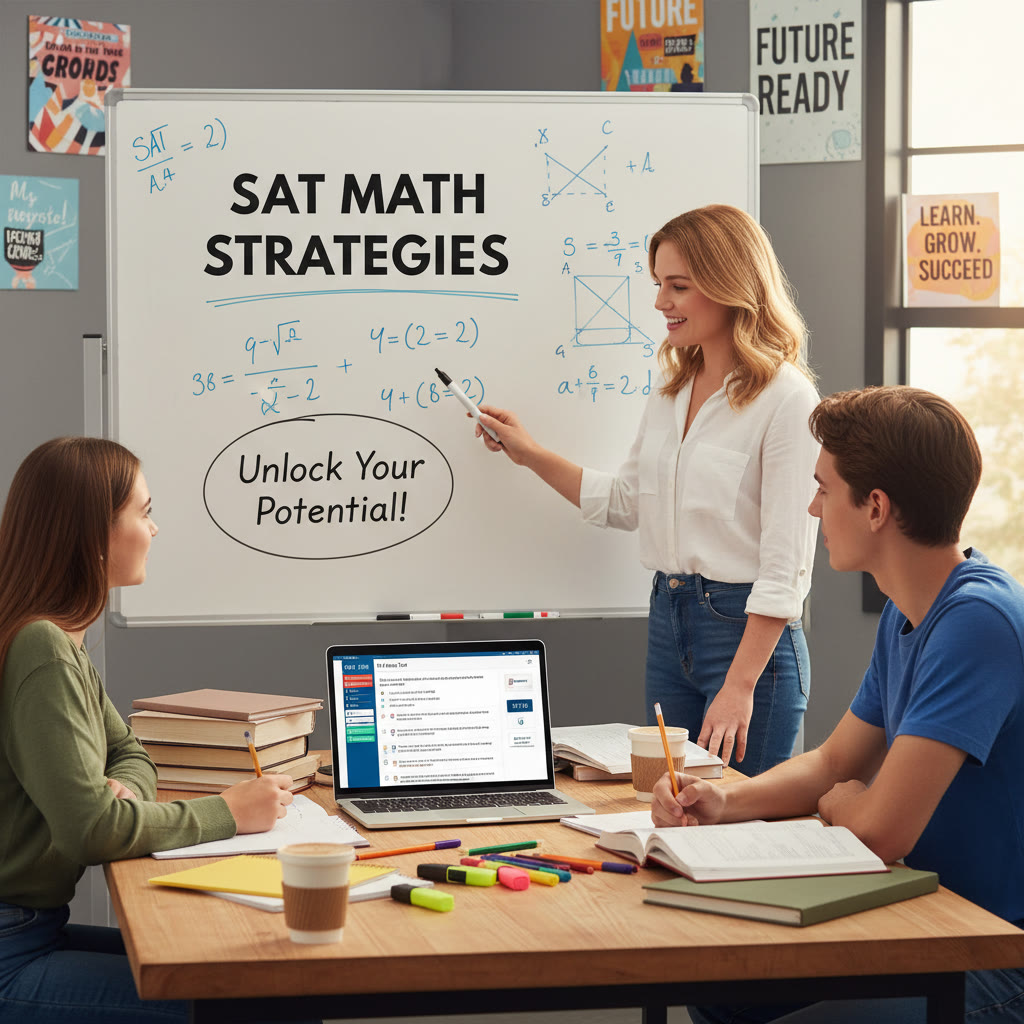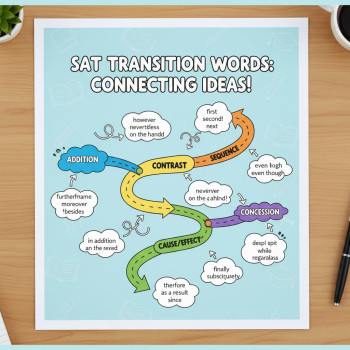Understanding RPI and Why SAT Scores Still Matter
Rensselaer Polytechnic Institute (RPI) is one of the nation’s best-known engineering and technical universities — a place where innovation, hands-on learning, and rigorous academics come together. For many applicants, especially those targeting competitive majors like computer science, engineering, or data science, SAT scores remain an important piece of the admissions puzzle. While admissions decisions consider your whole profile — coursework, grades, essays, recommendations, and extracurriculars — understanding how SAT fits into RPI’s expectations helps you plan smartly and present your strongest application.

What RPI Typically Looks For in SAT Scores
College profile snapshots commonly report the middle 50% SAT ranges for admitted students. For RPI, that middle 50% typically falls in the upper tier compared to national averages — reflecting its STEM focus and competitive applicant pool. Remember: middle 50% means half of admitted students score within that range and half are outside it. A score in or above that range strengthens your application but isn’t an absolute guarantee, and a score below it doesn’t automatically disqualify you — context matters.
Interpreting the SAT Range — Practical Takeaways
- If your score is within RPI’s middle 50%, you’re academically competitive from a test-score standpoint.
- Scores above the range can boost your standing and scholarship chances, especially for STEM programs.
- Lower scores are offset by exceptional coursework, AP/IB results, strong essays, research experience, or standout recommendations.
Latest Score Ranges and What They Mean (Digital SAT Context)
With the SAT now delivered in a digital format, students should treat scores the same way they always have — as a single quantifiable data point within an application. The total score still ranges from 400–1600, composed of Math and Evidence-Based Reading & Writing sections. For ambitious STEM applicants to RPI, the Math score matters especially, but a balanced profile helps.
Representative SAT Range Table (Middle 50%)
The table below summarizes the typical middle 50% SAT range you’ll see reported for RPI applicants. Keep in mind that ranges can vary slightly year-to-year and may be reported differently (superscored totals, single sittings, or section emphasis). Use the table as a directional tool rather than an absolute threshold.
| Measure | Typical Range (Middle 50%) | What It Signals |
|---|---|---|
| Total SAT (400–1600) | 1390–1500 | Strong academic readiness for RPI; typical of admitted students. |
| Math Section | 720–780 (approx.) | High performance in quantitative reasoning — valuable for engineering majors. |
| EBRW Section | 670–740 (approx.) | Solid verbal and writing skills; supports technical communication success. |
Test-Optional vs. Test-Required: Where RPI Stands
Admissions policies have shifted over recent years, with many schools experimenting with test-optional or test-flexible models. For applicants to RPI, the key rule of thumb is this: check the exact policy for the application cycle you’re applying to and base your decision on whether your score strengthens your application.
How to Decide Whether to Submit SAT Scores to RPI
- Submit if your total score is within or above the middle 50% range — it can reinforce academic readiness.
- If your score is below the range but you have exceptional other qualifications (research, portfolio, grades), consider submitting with context in your application.
- If you’re testing for scholarships, verify whether RPI considers SATs for merit awards — a higher score can sometimes unlock scholarship opportunities.
Timing Your Digital SAT: When to Test for RPI
Planning test dates strategically is crucial. Seniors applying in an early round or Regular Decision should ensure scores are available to admissions by the application deadline. Because the SAT is offered multiple times a year in digital form, you can choose dates that allow for one or two retakes before you submit applications.
Recommended Testing Timeline
- Junior year spring: Take an initial SAT to set a baseline.
- Summer after junior year: Targeted practice and one official test if needed.
- Early senior year (by October/November): Final test(s) so scores arrive before deadlines.
How Admissions Uses SAT Scores — Beyond the Number
Admissions officers don’t view SAT scores in a vacuum. They look for patterns and context: course rigor, grade trends, extracurricular depth, and unique experiences. Strong SAT math scores for STEM applicants may confirm academic potential, while EBRW scores can underscore preparedness for demanding writing and communication tasks — both vital at RPI.
Examples of Contextual Considerations
- A student with a 1380 SAT who took advanced coursework (AP/IB) and earned high grades may be more attractive than a 1500 scorer with a weaker transcript.
- Improvement over time — rising grades or a stronger second SAT sitting — demonstrates growth and perseverance.
- Research experience, internships, or competitions in STEM can significantly bolster an application, sometimes outweighing a slightly lower SAT.
Practical Preparation Strategy for RPI Applicants
Preparing for the SAT with RPI in mind means prioritizing math and problem-solving while maintaining strong reading and writing skills. Here’s a practical, time-tested approach you can adapt to your schedule.
8-Week Focused Study Plan (Example)
- Weeks 1–2: Diagnostic test and identify weaknesses. Create a targeted plan: algebra, advanced math topics, reading comprehension, or command of evidence.
- Weeks 3–4: Master core math (algebra, functions, geometry fundamentals). Practice 3–4 official digital SAT math sets per week.
- Weeks 5–6: Reading and writing focus — practice evidence-based reading and concise written reasoning.
- Weeks 7–8: Full timed practice tests, revision of mistakes, and relaxation/mental preparation strategies.
Tools and Resources That Make a Difference
Free official practice resources exist and are essential. In addition to self-study materials, consider targeted help: one-on-one tutoring, tailored study plans, and data-driven feedback. For example, Sparkl’s personalized tutoring can dovetail with a student’s schedule by offering 1-on-1 guidance, tailored study plans, expert tutors, and AI-driven insights to identify weak spots and accelerate progress — especially helpful for students aiming for RPI’s higher score band.
Which Study Habits Actually Improve Scores?
- Regular, moderate practice beats infrequent, intense cram sessions.
- Review every incorrect problem and classify it: content gap, careless mistake, or timing issue.
- Practice under the same timing and format as the digital SAT to build familiar rhythms.
- Simulate test-day conditions for full practice tests — no devices, timed sections, short breaks.
Essay, Portfolio, and Holistic Strengths — What Complements SATs at RPI
RPI values students who are makers, thinkers, and problem-solvers. Your essays and supplemental materials should illustrate how you engage with engineering and innovation beyond grades. Describe projects, leadership in teams, or research experiences concretely: what problem you solved, your role, the skills you learned, and the impact.
Strong Supplemental Evidence Examples
- A robotics club leader describing a design iteration that improved a robot’s performance and what they learned about systems thinking.
- A student research project that led to a poster, fair, or publication — with clear explanation of methods and outcomes.
- Software, hardware, or engineering portfolios showcasing original work (explain the context and collaboration level).
How to Present Lower SAT Scores If They Don’t Reflect You
If your score doesn’t reflect your true potential, use other application elements to tell that story: grades in advanced STEM classes, teacher recommendations that emphasize quantitative skills, or a research mentor’s letter. If you retake the SAT and improve, highlight the growth in your application or additional optional material where allowed.
When Sending an Addendum Makes Sense
- Significant upward trajectory after an early lower score.
- Extenuating circumstances (illness, family hardship) that impacted test day performance; briefly explain in a context paragraph if the application system allows.
- Evidence of mastery elsewhere — AP scores, college-level coursework, or independent research.
Scholarships, Merit Aid, and the Role of SAT at RPI
Some institutions consider SAT scores in awarding merit scholarships. For RPI applicants, confirming whether SATs factor into scholarship decisions for your intake year is wise. High SATs often strengthen merit cases, especially when combined with exceptional GPA and extracurricular achievements.
Application Checklist for RPI-Bound SAT Testers
- Confirm RPI’s test policy for the exact application year and deadlines.
- Take an official digital SAT by early senior year (or earlier) to allow for one retake.
- Practice with official digital SAT practice and full-length timed tests.
- Showcase quantitative strength through courses, AP scores, and project-based evidence.
- Consider 1-on-1 tutoring if you need targeted improvement; tailored plans and AI insights can speed progress.
- Prepare polished essays and thoughtful recommendations that highlight your engineering curiosity and problem-solving mindset.
Sample Timeline: Junior Year to Application Submission
Below is a suggested timeline to break the process into manageable steps. Flex the schedule to fit your commitments and application deadlines.
| When | What to Do | Why It Helps |
|---|---|---|
| Spring, Junior Year | Take initial digital SAT for a baseline; begin focused content review. | Identifies strengths and gaps; informs study plan. |
| Summer | Intensive practice + targeted tutoring for weak areas. | Big gains possible with concentrated effort and fewer school distractions. |
| Early Senior Year | Take/retake SAT; finalize college list and essays. | Ensures scores arrive before deadlines; essays provide context. |
| Fall Senior Year | Submit applications; follow up on test score submission and recommendations. | Timely submission avoids avoidable delays and missed opportunities. |
Real-World Example: How a Student Improved Toward RPI’s Range
Consider Maya, a hypothetical applicant who began with a 1300 digital SAT in spring of her junior year. She was passionate about materials science and had a strong course load, but her math pacing and certain geometry topics held her back. Maya worked with a tutor for eight weeks: focused math drills, timed section practice, and error log reviews. She also completed full-length practice tests under test-day conditions. By October of senior year she scored a 1450, bringing her into RPI’s competitive range. Her application combined that improved score, AP exam successes, and a summer research internship — a compelling package.
Final Tips: Confidence, Balance, and Communicating Your Story
One of the most useful pieces of advice is to treat the SAT as just one chapter in your application story. Prepare seriously, practice consistently, and use resources strategically. If you need focused help, one-on-one tutoring and personalized study plans — especially with actionable feedback and AI-informed diagnostics — can be transformative. Services such as Sparkl provide tailored support that helps busy students hit target scores without burning out.
Day-before and Test-day Checklist
- Get a restful night’s sleep and eat a balanced breakfast.
- Charge devices, gather approved ID, and bring allowed materials for a smoother test day.
- Do a short, confident warm-up — nothing heavy; trust your practice.
Closing Thoughts for Students and Parents
Applying to RPI is exciting and a little intimidating — and that’s okay. Focus on consistent progress, highlight your curiosity and projects, and choose test strategies that fit your life and learning style. Whether you’re improving math score by targeted practice, polishing your essays, or adding research experiences to your résumé, every element contributes to a compelling application.
If you want personalized guidance, exploring 1-on-1 tutoring and tailored study plans can make a big difference; targeted support helps you study smarter and demonstrates steady growth, which admissions teams appreciate. Most importantly, keep perspective: the SAT helps RPI understand an aspect of your academic readiness, but your passion, resilience, and intellectual curiosity are what will truly make your application shine.

Good luck — and remember: steady preparation, honest reflection on progress, and smart use of resources will put you in the best position to succeed at Rensselaer.















No Comments
Leave a comment Cancel